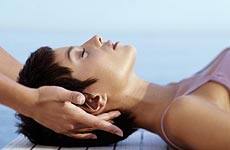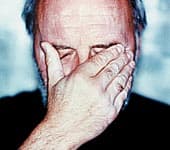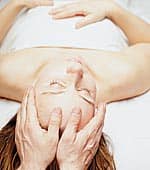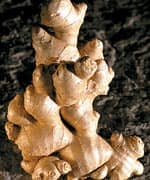Life Extension Magazine®
For more than three decades, migraine sufferers in Germany have been prescribed an extract derived from a perennial herb known as butterbur. Now medical practitioners in the United States are paying close attention to this herbal extract’s remarkable ability to reduce the number of headaches that migraine sufferers experience each month by almost 50%.1 Butterbur’s principal active constituent is petasin, which reduces smooth muscle spasms and appears to be particularly valuable in relaxing the constriction of cerebral blood vessels.2 The petasin in butterbur also makes this herb useful in managing upper respiratory inflammation, asthma attacks, urinary disorders, menstrual cramps, kidney stones, and various gastrointestinal disorders associated with smooth muscle spasm.2 However, it is butterbur’s ability to markedly reduce the frequency of migraine headaches that has recently excited researchers and migraine sufferers alike.1
Butterbur’s Success in EuropeMigraine treatment in the United States has focused on pharmaceuticals. In Germany, however, where nutraceutical companies have long been recognized as world leaders in herbal medication research conducted under stringent government regulation, butterbur is a popular and proven prophylactic alternative to prescription drugs. Conventional migraine medications are expensive, can have serious side effects, and often are not effective in preventing migraine attacks. In a study published in 2000 in the International Journal of Clinical Pharmacology and Therapeutics, German neurologist Dr. Werner Grossmann set out to determine whether a standardized butterbur extract could limit migraine attacks as successfully as conventional prescription medications, and whether it, too, posed a risk of dangerous side effects. Drugs most often prescribed to reduce migraine frequency include beta-blockers such as propranolol and metoprolol, whose common side effects are lowered blood pressure, muscle weakness, and depression. Also frequently prescribed are calcium antagonists such as flunarizine and serotonin antagonists such as methysergide and pizotifen, whose shared side effects include tiredness, weight increase, Parkinson-like symptoms, and concentration disturbances. In placebo-controlled, double-blind studies, these medications have reduced migraine frequency by 50-70%.9
Dr. Grossmann and his colleagues studied 60 migraine outpatients at the Munich-Harlaching Municipal Hospital. The 28 males and 32 females averaged 29 years of age. Each subject had experienced at least three migraine attacks a month for the previous three months and had taken no prophylactic migraine medication for four weeks before beginning the study. Thirty-three of the subjects took 50 mg of standardized butterbur extract twice a day, while 27 took placebo. Fifty-eight participants completed the study.10 Following one month of treatment, the butterbur-supplemented group’s average of 3.3 migraine attacks a month before taking medication dropped to 1.8 attacks a month. After eight weeks on the supplement, they averaged 1.3 attacks a month. At the study’s 12-week conclusion, the group averaged 1.7 attacks a month. Thus, the migraine sufferers experienced a 61% decrease in headaches after eight weeks and a 49% decrease after 12 weeks while taking the butterbur extract. By contrast, the number of monthly headaches in the placebo group dropped from 2.9 attacks per month without medication to 2.2 attacks after four weeks, 2.4 attacks after eight weeks, and 2.6 attacks at the end of 12 weeks—a statistically insignificant reduction in total headaches.10 Among the butterbur group, the number of headache days per month fell from 3.4 to 1.7 by the end of the study period. The intensity of migraine pain and its duration (as reported by the study participants) did not decrease significantly for either the butterbur or placebo group. However, when asked whether they had benefited from the treatment, 23 subjects who received butterbur said yes, while eight responded no. By contrast, only seven people in the placebo group said they had benefited, while 20 said they had not.10 Moreover, not one participant in either the butterbur or placebo group reported any side effects during the three-month trial. According to Dr. Grossmann: “The results of this study demonstrate that the special extract of Petasites hydrides [butterbur] is effective in the prophylactic treatment of migraine. The significant reduction in the frequency of attacks and number of migraine days is comparable to other agents considered effective for migraine prophylaxis, such as beta-blockers, calcium antagonists, e.g. flunarizine, cyclandelate, as well as serotonin antagonists.”10 New Studies Confirm German FindingsFour years after the German study was published, Dr. Richard Lipton, a neurologist at the Montefiore Medical Center in New York City, published the results of a similar study of 245 migraine sufferers. This trial likewise demonstrated that a standardized butterbur formulation significantly limited migraine frequency. The participants averaged 42 years of age and had experienced two to six migraine headaches a month for the three months before the trial. Unlike the German study in which participants were evenly divided between males and females, females made up an average of 81% of the subjects in the three trial groups.1 In Dr. Lipton’s four-month study, approximately one third of the subjects were given placebo, one third received 50 mg of butterbur extract twice daily, and another third took 75 mg of butterbur twice daily. After four months of treatment, those receiving placebo reported a 26% reduction in headache frequency. The group taking 50 mg of butterbur extract reported a 36% drop and the 75-mg group had a 48% reduction. In the 75-mg group, 68% of the subjects had a greater than 50% reduction in frequency of attacks after four months; in the placebo group, 49% reported a comparable reduction. Like the German researchers, Lipton and his colleagues found no reduction in the intensity of pain or duration of headaches that could be attributed to butterbur. The only statistically significant side effect was that roughly 10% of those taking both doses of butterbur experienced increased burping.1 Speaking with reporters following the study’s publication in the journal Neurology, Dr. Lipton cautioned: “Before [they] take a medicine to prevent migraines, consumers should be pretty sure that they have migraines, and the best way to ensure that you have migraines is to get a diagnosis from a health care professional. Once migraine is diagnosed, [butterbur extract] is intended as a self-treatment. It is available over the counter without a prescription, and it’s a treatment that many people initiate on their own. For people who are taking prescription medications, it is worth checking with a doctor, though, before starting a natural product, and it’s important to remember that even though it is a natural product, it is a real drug, with real benefits but also the potential for real interactions with other medications.”11
On the heels of the Lipton study, German researchers published the results of a trial conducted at five pediatric clinics and 13 medical practices in that country. The study’s 108 participants included 29 children aged 6-9 years and 79 adolescents aged 10-17 years, each of whom had suffered from migraines for at least one year. Depending on their age and weight, the subjects were treated with 50-150 mg of standardized butterbur extract daily for four months. Treatment progression was recorded in migraine journals designed especially for children and adolescents.12 At the study’s conclusion, the number of migraine attacks in both groups was substantially reduced: from 9.4 attacks during the three months preceding the study to 4.0 attacks over the four-month study in the younger group, and from 9.7 to 5.8 attacks among the adolescents. Seventy-seven percent of the participants reported a reduction of at least 50% in headache frequency, and 91% reported that they felt substantially or slightly improved after taking butterbur for the length of the study. The butterbur was well tolerated, with no serious adverse side effects reported. As in the Lipton study, a few participants reported experiencing belching in association with the butterbur extract.12 Study authors Raymond Pothmann and Ulrich Danesch cautioned that because of the trial’s uncontrolled nature, its positive results could not be regarded as definitive proof of butterbur’s effectiveness in children and adolescents suffering migraine. However, when combined with data from the Grossman and Lipton studies, the German researchers said their findings suggest that standardized butterbur extract is a safe, effective prophylactic migraine treatment in children and adolescents as well as adults. Furthermore, they noted that the results warranted a placebo-controlled trial to further document butterbur’s efficacy in young migraine sufferers.12 Danesch also sought to determine the overall safety of the standardized German butterbur formulation, particularly because the plant is known to contain small quantities of pyrrolizidine alkaloids that are carcinogenic and potentially toxic to the liver. The German manufacturer of standardized butterbur extracts reports that these harmful substances are successfully removed using a high-pressure liquid carbon dioxide extraction process. This claim has been certified by the German government in its regulation of all nutraceuticals produced and distributed in that country. In repeated studies, Danesch and colleagues fed standardized butterbur extract to laboratory rats in dosages correlated to 333-1,250 times the recommended human daily dosage. They failed to detect any adverse effects on the animals, even after 26 weeks of study, a period representing roughly one quarter of the rats’ average life span.13
| ||||||||
Relief for Respiratory, Gastrointestinal ConditionsThe ability of butterbur’s active ingredient petasin to quell smooth muscle spasms in vascular walls (which may contribute to migraine) allows it to similarly benefit other parts of the body, thereby mitigating disorders unrelated to migraine.2,30 In Europe, butterbur extract is commonly used to battle allergic rhinitis (hay fever), and studies have confirmed its efficacy, both compared to a commonly used prescription medication and in a double- blind, placebo-controlled study. When butterbur extract was compared with Zyrtec®, the brand name of the anti-allergy prescription medication cetirizine, researchers determined that both compounds were equally effective in limiting sneezing, nasal congestion, runny nose, itchy nose, and itchy eyes. Among the 131 patients studied over two weeks, half took butterbur extract to relieve their symptoms and the other half took cetirizine. The researchers believe that petasin in butterbur extract proved efficacious by limiting histamine and leukotriene, which promote inflammation and mucous secretions, and by dilating constricted airways to ease breathing.30 Butterbur leaves and root have been used for centuries to manage bronchial asthma and whooping cough. A recent Scottish study showed that the anti-inflammatory action of 25 mg of butterbur extract taken twice daily significantly improved out-breath volume in asthma patients who regularly treat their symptoms with inhaled corticosteroids. The investigators noted that butterbur complemented the activity of the corticosteroids and showed a superior effect compared to placebo.31
Furthermore, in a German open trial, 80 asthma sufferers who took 50 mg of butterbur extract three times a day saw the number, duration, and severity of their asthma attacks decrease during an eight-week study period. The study authors speculated that butterbur extract may be effective both as a stand-alone asthma treatment and in combination with other asthma medications.32 Historically, butterbur has been used as a folk medicine for various gastrointestinal disorders, particularly digestive tract spasms associated with colic and bile flow obstruction. A contemporary German study found butterbur extract can block ethanol-induced damage to the stomach and reduce ulcerations in the small intestine.33 German researchers are studying butterbur’s potential applications in controlling spasms of the urogenital tract, which can contribute to urinary urgency and incontinence. They believe that butterbur may prove effective in managing these disorders.34
ConclusionAs more and more research documenting butterbur’s ability to reduce migraine attacks comes to light, thousands of sufferers are turning to this herbal extract as a safe, effective, and natural way to limit the crippling effects of migraine headaches. Since its clinical use began in Germany in 1985, nearly half a million people have been treated with standardized butterbur extract, with significant success and virtually no side effects.13 Investigators in Europe and North America are testing butterbur’s applications in managing various disorders like hay fever, gastrointestinal conditions, and urogenital disorders. Butterbur thus appears to be a promising natural remedy for many common health complaints. | |||
| References | |||
| 1. Lipton RB, Gobel H, Einhaupl KM, Wilks K, Mauskop A. Petasites hybridus root (butterbur) is an effective preventive treatment for migraine. Neurology. 2004 Dec 28;63(12):2240-4. 2. Anon. Monograph. Petasites hybridus. Altern Med Rev. 2001 Apr;6(2):207-9. 3. Stewart WF, Lipton RB, Celentano DD, Reed ML. Prevalence of migraine headache in the United States. Relation to age, income, race, and other sociodemographic factors. JAMA. 1992 Jan 1;267(1):64-9. 4. Wenzel RG, Sarvis CA, Krause ML. Over-the-counter drugs for acute migraine attacks: literature review and recommendations. Pharmacotherapy. 2003 Apr;23(4):494-505. 5. Available at: www.nutraceuticalsworld.com. Accessed December 16, 2005. 6. Welch KM. Pathogenesis of migraine. Semin Neurol. 1997;17(4):335-41. 7. Headache Classification Committee of the International Headache Society. Classification and diagnostic criteria for headache disorders, cranial neuralgia and facial pain. Cephalalgia. 1988;8(Suppl 7):1-96. 8. Goadsby PJ, Lipton RB, Ferrari MD. Migraine—current understanding and treatment. N Engl J Med. 2002 Jan 24;346(4):257-70. 9. Available at: http://www.migraineaid.com/studies/1996-03-05FreieArtz/. Accessed December 16, 2005. 10. Grossmann M, Schmidramsl H. An extract of Petasites hybridus is effective in the prophylaxis of migraine. Int J Clin Pharmacol Ther. 2000 Sep;38(9):430-5. 11. Available at: http://www.wchstv.com/newsroom/healthyforlife/23.63.shtml. Accessed December 16, 2005. 12. Pothmann R, Danesch U. Migraine prevention in children and adolescents: results of an open study with a special butterbur root extract. Headache. 2005 Mar;45(3):196-203. 13. Danesch U, Rittinghausen R. Safety of a patented special butterbur root extract for migraine prevention. Headache. 2003 Jan;43(1):76-8. 14. Phillips S, Ruggier R, Hutchinson SE. Zingiber officinale (ginger)—an antiemetic for day case surgery. Anaesthesia. 1993 Aug;48(8):715-7. 15. Mowrey DB, Clayson DE. Motion sickness, ginger, and psychophysics. Lancet. 1982 Mar 20;1(8273)655-7. 16 Grontved A, Brask T, Kambskard J, Hentzer E. Ginger root against seasickness: A controlled trial on the open sea. Acta Otolaryngol. 1988 Jan-Feb;105(1-2):45-9. 17. Keating A, Chez RA. Ginger syrup as an antiemetic in early pregnancy. Altern Ther Health Med. 2002 Sep-Oct;8(5):89-91. 18. Japan Centra Revuo Medicina.1954:12;669. 19. Zhou JG. Tianjin Medical Journal. 1960, 2:131. 20. Ghazanfar SA. Handbook of Arabian Medicinal Plants. Boca Raton, FL: CRC Press; 1990. 21. Kowa H, Takeshima T, Nakashima K. Migraine update. Nippon Rinsho. 2005 Oct;63(10):1733-41. 22. Mascolo N, Jain R, Jain SC, Capasso F. Ethnopharmacologic investigation of ginger (Zingiber officinale). J Ethnopharmacology. 1989 Nov;27(1-2):129-40. 23. Flynn DL, Rafferty MF, Boctor AM. Inhibition of human neutrophil 5-lipoxygenase activity by gingerdione, shogaol, capsaicin and related pungent compounds. Prostaglandins Leukotrienes Med. 1986 Oct;24(2-3):195-8. 24. Kiuchi F, Shibuya M, Sankawa U. Inhibitors of prostaglandin biosynthesis from ginger. Chem Pharm Bull. 1982 Feb;30(2):754-7. 25. Sheftell F, Rapoport A, Weeks R, Walker B, Gammerman I, Baskin S. Montelukast in the prophylaxis of migraine: a potential role for leukotriene modifiers. Headache. 2000 Feb;40(2):158-63. 26. Grzanna R, Lindmark L, Frondoza CG. Ginger—an herbal medicinal product with broad anti-inflammatory actions. J Med Food. 2005 Summer;8(2):125-32. 27. Ishizaki K, Takeshima T, Fukuhara Y, et al. Increased plasma transforming growth factor-beta-1 in migraine. Headache. 2005 Oct;45(9):1224-8. 28. Vishwakarma SL, Pal SC, Kasture VS, Kasture SB. Anxiolytic and antiemetic activity of Zingiber officianale. Phytother Res. 2002 Nov;16(7):621-6. 29. Lanteri-Minet M, Radat F, Chautard MH, Lucas C. Anxiety and depression associated with migraine: Influence on migraine subjects’s disability and quality of life, and acute migraine management. Pain. 2005 Dec 5;118(3):319-26. 30. Available at: http://www.herbalgram.org/herbalgram/articleview.asp?a=2707. Accessed December 16, 2005. 31. Lee DK, Haggart K, Robb FM, Lipworth BJ. Butterbur, a herbal remedy, confers complementary anti-inflammatory activity in asthmatic patients receiving inhaled corticosteroids. Clin Exp Allergy. 2004 Jan;34(1):110-14. 32. Danesch UC. Petasites hybridus (Butterbur root) extract in the treatment of asthma—an open trial. Altern Med Rev. 2004 Mar;9(1):54-62. 33. Brune K, Bickel D, Peskar BA. Gastro-protective effects by extracts of Petasites hybridus: the role of inhibition of peptido-leukotriene synthesis. Planta Med. 1993 Dec;59(6):494-6. 34. Kalin P. The common butterbur (Petasites hybridus)—portrait of a medicinal herb. Forsch Komplementarmed Klass Naturheilkd. 2003 Apr;10 Suppl 141-44. 35. Schoenen J, Lenaerts M, Bastings E. High-dose riboflavin as a prophylactic treatment of migraine: results of an open pilot study. Cephalalgia. 1994 Oct;14(5):328-9. 36. Schoenen J, Jacquy J, Lenaerts M. Effectiveness of high-dose riboflavin in migraine prophylaxis. A randomized controlled trial. Neurology. 1998 Feb;50(2):466-70. 37. Boehnke C, Reuter U, Flach U, Schuh-Hofer S, Einhaupl KM, Arnold G. High-dose riboflavin treatment is efficacious in migraine prophylaxis: an open study in a tertiary care centre. Eur J Neurol. 2004 Jul;11(7):475-7. 38. Maizels M, Blumenfeld A, Burchette R. A combination of riboflavin, magnesium, and feverfew for migraine prophylaxis: a randomized trial. Headache. 2004 Oct;44(9):885-90. |





